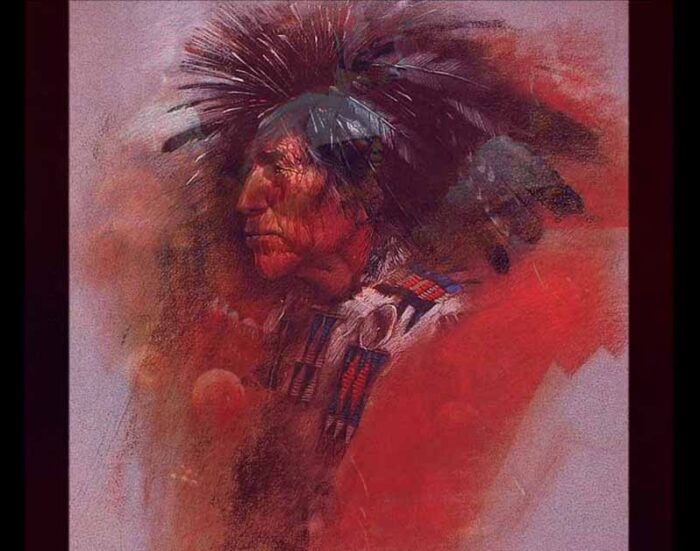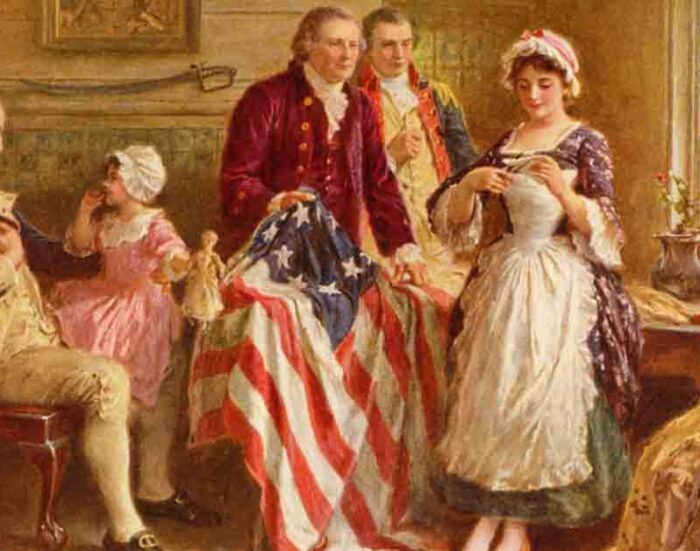What Is American Art? A Guide to Purchasing Native-American Artwork
Understanding American Art and Native American Art can be a complex but crucial task for art buyers. American art buyers, whether they are collectors or individuals interested in purchasing American art, define art based on their personal preferences and interpretations. American art typically refers to art from the North American colonies and the United States, utilizing various art methods, such as paintings. This encompasses the ever-popular realistic landscape and portrait pieces from that era.
The definitions of American art and Native American art are not fixed but are often subject to individual interpretation. For instance, the Boston Museum of Fine Arts has redefined its interpretation of colonial-related art as North American colonial art, encompassing all early American art. However, many American art buyers consider American art to correlate with colonial art only. This fluidity in definitions underscores the crucial role of understanding the perspectives of potential buyers, empowering art market individuals with the knowledge to navigate this complex landscape.
Some American Art Buyers also consider modern art made in America as American Art. The compass of American Art is often left to the buyer or beholder.
Native American Art Buyers Guide
Native American Art is also known as American Art or the art of the Aboriginal inhabitants of the Americas. It is a collection of art from American Indians and includes various mediums, such as pottery and paintings. Native American Art buyers focus on art from Native Americans rather than art from Europeans who lived in the colonies.
Native American Art is not merely a collection of artifacts; it’s a gateway to the opulent and diverse cultures of the indigenous people of the Americas. Unlike the Europeans who lived in the colonies, the indigenous people didn’t document their history in a similar manner. Instead, they left behind artifacts that contained fragments of their lives and culture. This unique approach to preserving history through art should not just intrigue but also inspire us all, underscoring the immense cultural significance of Native American Art.
Native American Art typically refers to antique pieces dating back centuries, but it can also embrace modern art, which American art buyers do. The ‘individual Native American Art buyers define the definition ‘, meaning that each buyer may have their own interpretation of what constitutes Native American Art.
American Art Collectors Vs. Native American Art Buyers
Traditionally interested in American Art, American art collectors can also include any art created in America from any age, such as Native American Art and Modern Art. On the other hand, Native American Art buyers specifically focus on art from Native Americans rather than Europeans who lived in the colonies. Understanding this distinction is not just informative, but it can also be a strategic advantage when selling your art, providing valuable insights into the preferences of different types of art enthusiasts and instilling confidence in your selling strategy.
If you want to sell your American Art, you should check with individual American Art Buyers to determine their interpretation of the term. For instance, if you have a landscape painting from the Hudson River School, you might want to approach a collector who specializes in American landscape art. If you have an Indian art piece, you’ll want to check with Native American art buyers because you will likely find buyers specializing in American Indian art. On the other hand, if you are selling early American Art, you’d probably not do well selling to a Native American Art buyer. Knowing the channel to go through is imperative to maximize your return.
Sorting It All Out
While it can be confusing to determine which type of buyer deals in a particular kind and time period of art, knowing a little more about the terms used in the art world is beneficial. You are much more likely to sell art for more when you go to the appropriate buyer, so it is worth taking a little time to do your homework and brush up on what American Art entails versus what Native American Art includes.
Tips for Buying or Selling American Art
Art is an important part of every culture, including American culture. There is a distinct vibe to American artworks, which is reflected in the work of numerous famous American artists, including John Singer Sargent, Jasper Johns, Grant Wood, Georgia O’Keeffe, Jackson Pollock, and many others, spanning diverse styles but encapsulating an unmistakable American feel. Its distinct American flavour makes collecting American artwork not only enjoyable but also difficult when determining the value of a piece you intend to buy or sell.
American art auctions are brimming with valuable and impressive works, and American art collectors are a savvy and diverse group of people with high standards. In this article, we’ll look at some helpful hints to keep in mind when buying or selling art.
1. Understanding the Value of American Art
Understanding how the value of artworks is determined is critical for navigating the world of American art. Authentication is an important first step, and it can be relatively simple with contemporary pieces when the artist is still alive to verify them. It becomes more difficult, however, with older, historic pieces that have had multiple owners. Serious art collectors are always concerned with authentication. The artist’s reputation is important in determining the value; the more famous the artist, the more valuable the artworks. Other factors that influence the value include condition, size, and materials (for example, oil paintings are often more valuable than watercolours). The subject of the artworks or their provenance (previous ownership) can add significant value in some cases. Finally, the market will decide.
2. Expert Appraisal for American Art
Whether you are planning to sell American art online or spot a piece in a gallery that you must have, consulting with an American art appraiser is a wise move. A well-trained expert is well-versed in American history and art, allowing him or her to accurately determine the artwork’s origins, age, and value. He or she is also familiar with the market dynamics and legal complexities involved in selling a single valuable piece or an entire collection. It is critical to hire a reputable expert to assess the artwork. Check an appraiser’s educational and professional background before hiring him or her, and compare his or her prices to other experts to ensure you’re getting a reliable assessment.
3. Negotiation and Pricing
Don’t be afraid to look around and negotiate when visiting galleries. Because of the contract between the artist and the gallery, most galleries have the flexibility to lower the price by a small percentage. If you adore a piece by a particular artist but it is out of your price range, inquire about other works by the same artist. There could be a less expensive option that fits your budget. Because American art buyers are skilled at spotting a good deal, it’s worthwhile to investigate various options.
4. Preparation for American Art Auctions
If you want to participate in American art auctions, careful planning is important. Examine the auction catalogue carefully to become acquainted with the artworks on offer. Consider hiring an art expert to provide you with advice during the auction. Their advice can be invaluable in determining the best bidding strategy. Auctions can be hectic, and bidding can be perplexing at times. When in doubt, it’s better to watch than to participate. When dealing with online auctions, be cautious because they may not always guarantee the same level of authenticity and provenance verification as traditional physical auction houses. While auctions are often enjoyable for American art collectors, being well-prepared is essential to making the most of the experience.
5. Leveraging Online Resources for American Art
The internet is a powerful tool for buying and selling American art, offering a wide range of options and information. While it provides excellent value, the sheer volume of results can be overwhelming. Prominent platforms, such as Sotheby’s auction house, can be relied on for high-quality artworks and reasonable prices, both when buying and selling. Premier art galleries are also a dependable source of exceptional art. However, the internet goes beyond simply connecting with well-known businesses. It’s a meeting place for auction houses, galleries, American art appraisers, and buyers and sellers of all kinds. Many artists now sell their work online, and people frequently sell artwork from their collections via various online channels. Additionally, numerous websites help you research the value of American artwork and find reputable American art appraisers. Thanks to the internet, it’s easier than ever to navigate the process of buying and selling American art.
6. Diversity in American Art
American art is incredibly diverse, reflecting the country’s multiculturalism. It’s worth noting the diversity of African American, Hispanic, Indigenous, and other artists who have contributed to the American art scene. This variety adds depth and variety to American art, emphasizing the importance of exploring and appreciating various cultural contributions.
7. Art Styles in America
Describe the various art styles that have emerged in the United States. From the powerful impact of Abstract Expressionism to the bold statements of Pop Art and the realism captured by artists, American art has evolved through various movements, each of which has left its own distinct mark on the artistic landscape.
8. Art Investment Considerations
Some collectors consider art to be an investment. It’s worth noting that, while art can appreciate over time, it is also a speculative investment. Purchasing art should be motivated primarily by a desire to own it, with investment potential serving as a secondary consideration. Warn the potential investors about the art market’s volatility.
9. Condition and Conservation Awareness
Highlight the significance of artwork condition and proper conservation. Buyers and sellers should be aware of how to care for and preserve artworks in order to ensure their long-term value. Well-preserved art retains its appeal and can command higher prices.
10. Networking in the Art World
In the art world, networking, participating in art events, joining art clubs, and networking with other collectors, artists, and experts can broaden one’s knowledge, open new doors, and foster a deeper appreciation for American art.
11. Legal Aspects
Understanding legal aspects of art, such as copyright, provenance, and any potential restrictions on specific artworks, is critical. To ensure that a smooth transaction and avoid legal issues, buyers and sellers should be aware of legal considerations.
12. Exploring Emerging Artists
While mentioning well-known artists is important, it is also exciting to discover new artists. These artists may offer one-of-a-kind and reasonably priced pieces, and supporting them can be rewarding. Highlight the possibility of discovering emerging artists in the American art scene.
13. International Impact of American Art
American art has had a substantial impact on global art trends. Mention the impacts of American artists on the international art market, because international buyers may be interested in American works, giving the market another dimension.
14. Supporting Local Art
Encourage buyers to explore local art scenes and support local artists. Exceptional art doesn’t always come from well-known galleries. By engaging with local artists, buyers can discover hidden gems and contribute to their local artistic community.
15. Role of Art Critics
Explain briefly the role of art critics and how their interpretations and reviews can affect the perception and value of artworks. Understanding the art critics’ perspectives can provide valuable insights into the larger art context.


